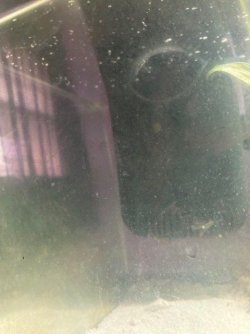I was directing my comments as much if not more at some other members in this thread too, just so you know it was not a hammering on you.

I doubt starvation was the issue, and obviously any hungry fish will poke into the substrate for food. But with gravel it is physically impossible for these fish to filter feed, and that is an instinct in their genetics that must be provided for if the fish are to be in good health. About 90-95% of all diseases we encounter in aquarium fish are due to stress. The pathogen/parasite or whatever may be present, but fish that are not under stress will in the majority of cases fight it off. Fish in the habitat would have disappeared long ago if this ability was not the case. So, avoiding stress is clearly the only good road to healthy fish. Stress weakens fish, slowly usually, and there are no visible (to the aquarist) signs until it has almost too late, and in some cases even then it is not obvious...the aquarist says, "my fish just suddenly died, why?" but most of the time the underlying reason causing stress becomes apparent. Stress is caused by any un-natural condition. This is why we continually advise that one must research the habitat conditions so we can provide as close as possible. Only by giving the fish what they "expect" can we be reasonably certain they will be "fine." We cannot talk to them to find out how they feel, and visible signs of trouble are often unobserved or may not even be visible.
Replacing the substrate can be safely done, I did it many years ago after I learned the benefits of sand. Your fish numbers seem to be few now, so it would not be too onerous. I won't go into all that, but if you intend cories you need sand, plainly stated. I could see the difference in my 60+ cories when I did this, on the advice of Heiko Bleher. We all learn throughout our time in this hobby.



